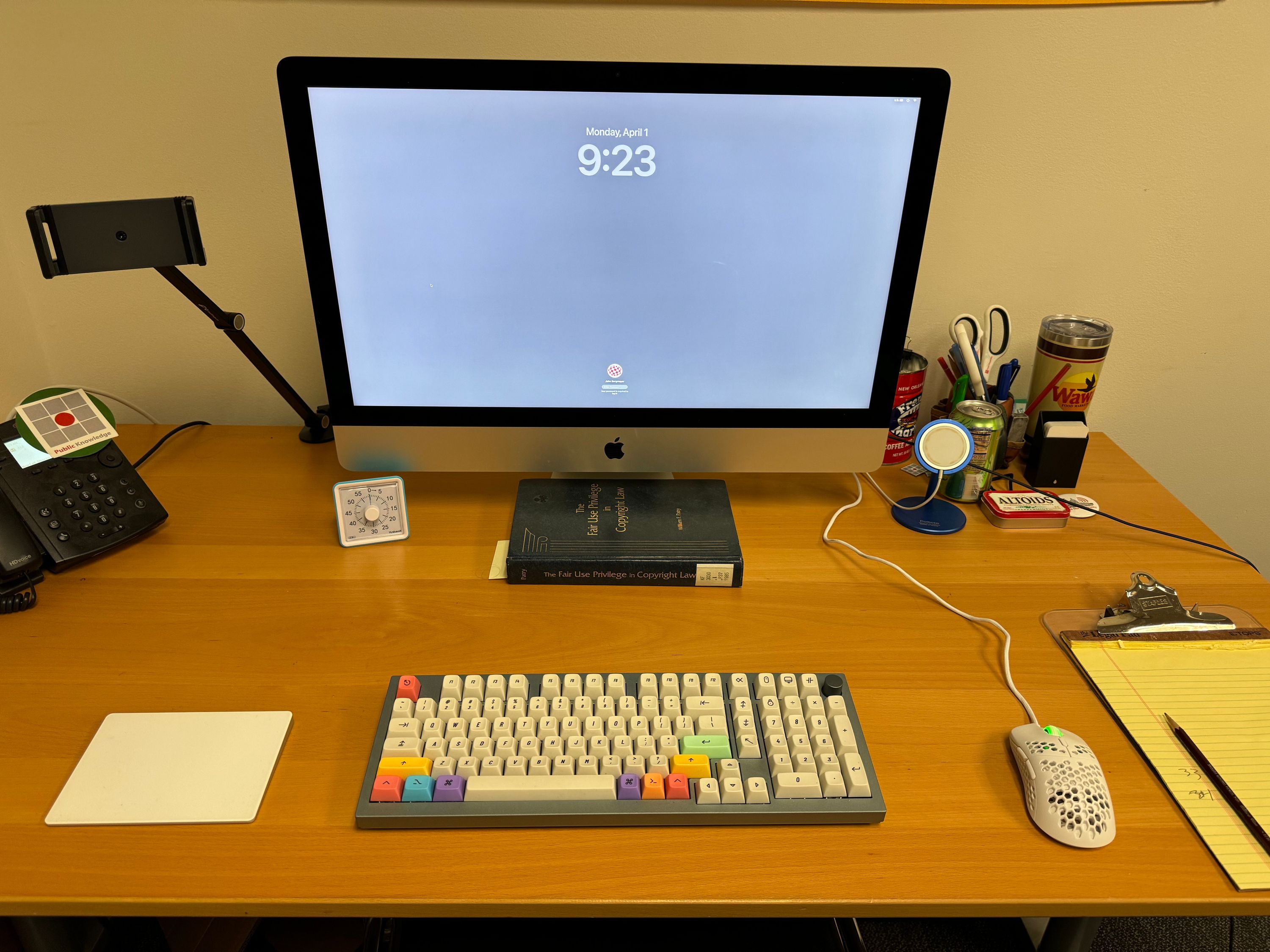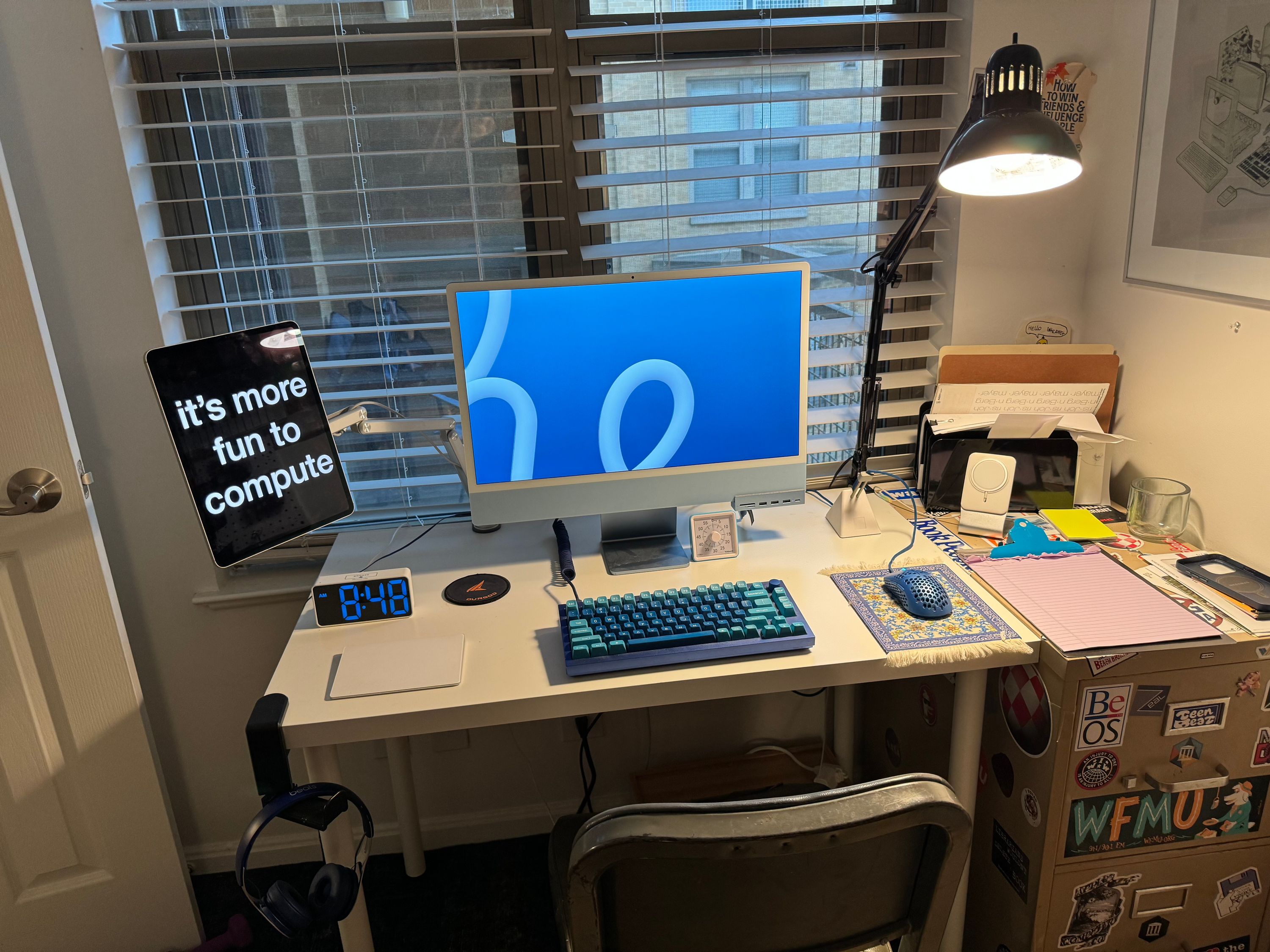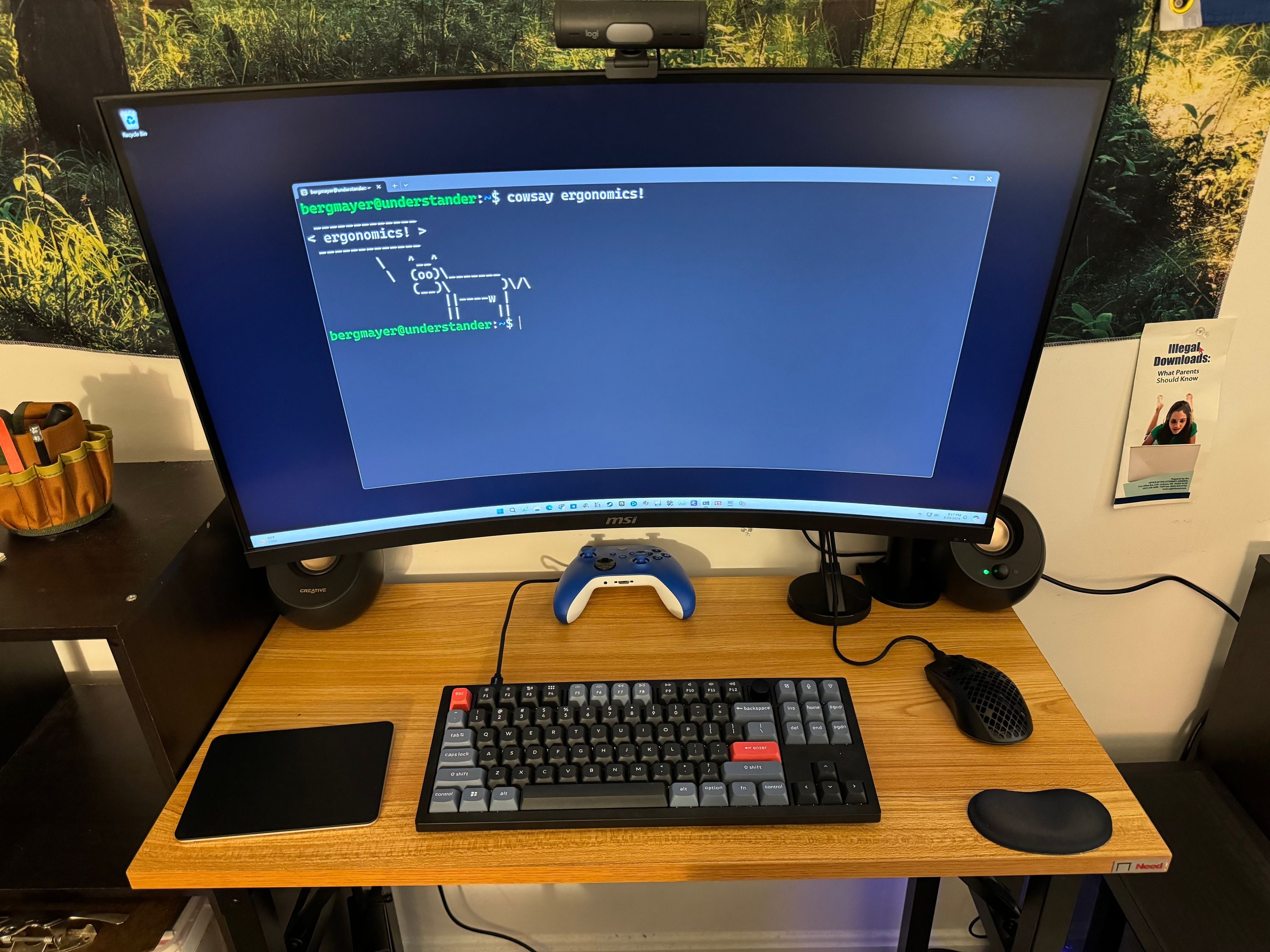For ergonomic reasons I try to use both my right and left hand somewhat equally when I use a computer. This is how I avoid RSI. I am not totally successful in staying balanced, but I try.
Most people use a laptop; when I did this, my method was to periodically sit on my right hand to force myself to use my left hand with the trackpad. Of course this doesn’t work when I have to type and such.
Nowadays I’m one of those people who likes to use fancy mechanical keyboards. Also, there are three desktop computers I switch between: 1) a 32” Intel iMac at work (some day I will have to upgrade this–it’s too bad that larger iMacs seem to be discontinued); 2) a 24” M1 iMac at home (zero need to upgrade this); 3) Gaming PC (that also is a home server for media (Plex) and games (Steam Link), runs backups, etc). I also use this gaming PC for things like messing with local AI models. On each one of these, I use a wired gaming mouse on the right and an Apple Magic Trackpad on the left.
 work.
work.
 home.
home.
 PC.
PC.
Not only does this help me limit RSI issues by switching hands, it allows me to have both the finer precision of a mouse, with the cool gesture controls that both macOS and Windows allow.
Notes:
Using an Apple Magic Trackpad on Windows is not officially supported, but it is possible. Apple generally ships the best trackpads and has for decades now, and the Apple Magic Tackpad is the only good external trackpad.
The keyboard with my home iMac is a Keychron Q1, with Zilent v2, 65g switches and Dasher keycaps from Drop. The switches are highly tactile but (relatively) quiet compared with many tactile switches. They remind me of the damped cream Alps switches used in the Apple Extended Keyboard II. The keycaps are inspired by the keycaps on the Data General “Dasher” terminal from 1977.
The keyboard with my work iMac is a Keychron Q5 Wireless, with Zilent v2, 67g switches and Extended 2048 keycaps. These keycaps are inspired by the keycaps on the aforementioned [Apple USB converters. A numpad does come in handy sometimes–I learned to be really fast at “10 key” when I had a data entry job. In retrospect, I wish I had gotten a wired-only version of this keyboard–a good keyboard can last decades: longer than batteries, longer than Bluetooth versions. But it can at least be used in wired mode. I also wish I had gotten the 65g weight switches I have at home–I don’t mind the extra force needed. I just like things to be uniform.
The PC keyboard is just a Keychron v3, not customized, with their “red” (linear) switches. Linear rather than tactile switches make more sense for gaming, but I prefer tactile switches for typing. I don’t like clicky switches at all–not really because of their sound, but because any sound switches make I prefer to be a side-effect of some other feature such as tactility, rather than being added in a purely gratituous way. A clicky escape or other special key can be cool though.
The Dasher and 2048 keycaps are the MT3 profile, which I love. I want keycaps that are taller and more highly scultped than the usual, not less.
The mice are either Steelseries or some no-name brand. I think this style of lightweight mouse is what matches a mechanical keyboard, and I really don’t like “ergonomic” mice as I find them to be less, not more comfortable to use, and I hate weird extra buttons. With all gaming mice, I usually need to figure out how to get the tracking to stay at a reasonable speed and to turn off their annoying gamer-style lights. I also prefer wired to wireless mice, since I never want to have my mouse run out of batteries. Mouse bungees can help with cord management.
I’ve mostly found that external monitors are more hassle than they’re worth: But I like using my iPad Pro from my Macs, with Universal Control (that is, as an iPad that I control with the Macs’s mouse and keyboard, as opposed to turning it into a second display). At home I mount it on an articulating arm with a magnetic mount for the 12.9” iPad Pro.